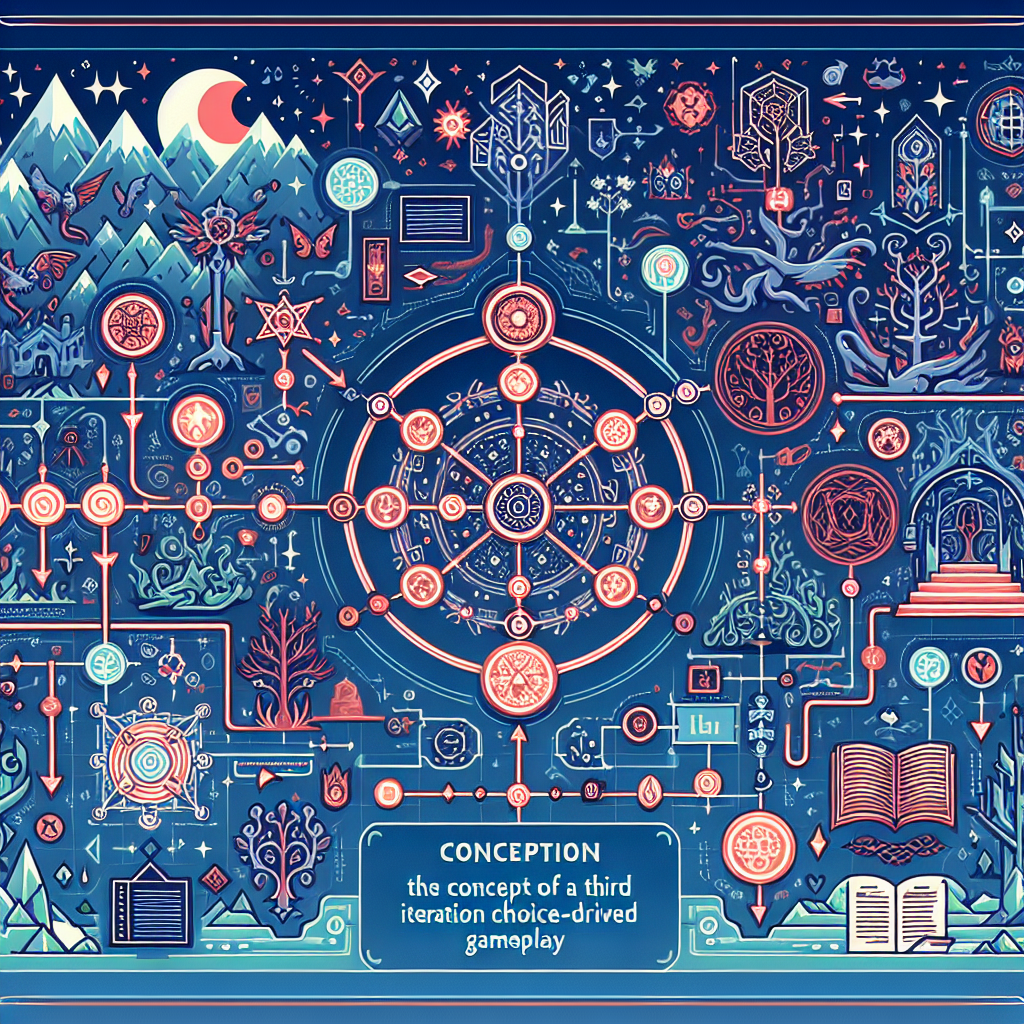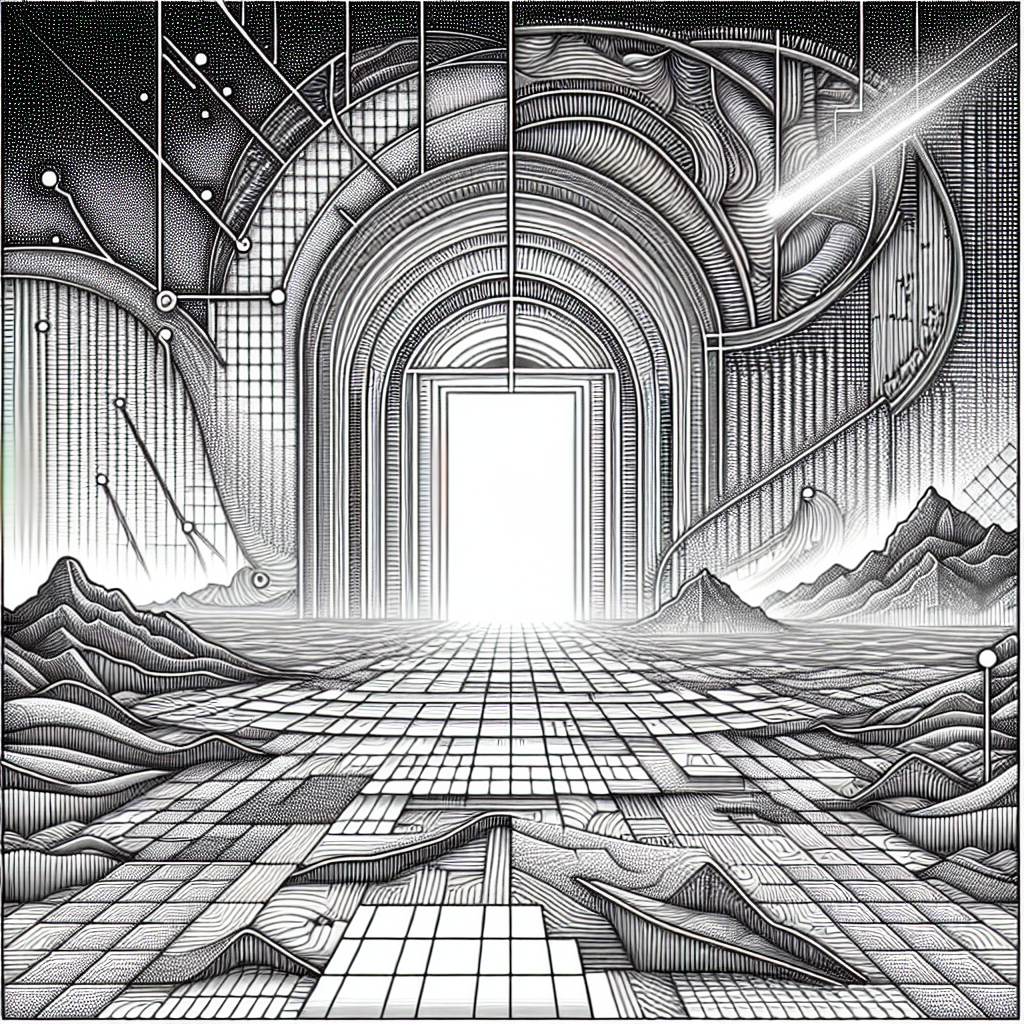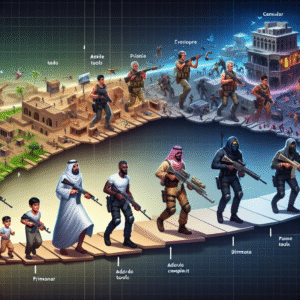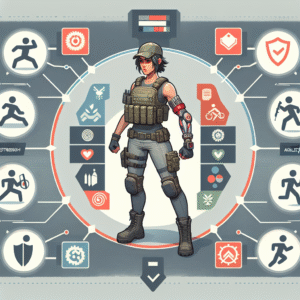Baldur’s Gate III: Exploring the Evolution of Choice-Driven Gameplay
Baldur’s Gate III: Exploring the Evolution of Choice-Driven Gameplay
In the realm of role-playing games (RPGs), narrative depth and player freedom have remained pivotal elements that differentiate engaging experiences from the mundane. Baldur’s Gate III, developed and published by Larian Studios, marks a significant milestone in this genre. This game exemplifies the evolution of choice-driven gameplay, a trend that has steadily gained momentum over the years. With its intricate narrative structure, the game provides players with myriad choices, each shaping the story in unique ways.
Historically, the Baldur’s Gate series has been revered for its integration of complex storytelling and character development. Originating in the late 1990s, the series was among the pioneers harnessing the principles of Dungeons & Dragons, offering players a semblance of tabletop RPGs in a digital format. Baldur’s Gate III continues this legacy, pushing boundaries by weaving choice-driven gameplay with advanced technology and deeper, more immersive narratives.
Central to Baldur’s Gate III’s design is its adherence to the fifth edition Dungeons & Dragons (D&D) rule set. This foundation establishes a complex web of choices, each influenced by the player’s character’s attributes, decision-making patterns, and the unpredictable outcomes of dice rolls. By incorporating a dice-based mechanic, the game stays authentic to its tabletop roots while introducing randomness that can dramatically alter the course of events. This system ensures that no two playthroughs are identical, providing a fresh, replayable experience grounded in player choice and chance.
Larian Studios has meticulously crafted characters and storylines that adapt to players’ decisions. Companions, for instance, react dynamically to choices, leading to varying levels of trust, companionship, or even enmity. This relational aspect deepens player investment, making each decision feel impactful. Whether aiding a companion on a personal quest or choosing to betray their trust, the player’s actions profoundly shape interpersonal dynamics, steering the narrative in different directions. This complexity offers players not just the power to shape the plot, but responsibility for the consequences of their choices.
Exploration and environmental interaction are further pillars supporting choice-driven gameplay in Baldur’s Gate III. The game world teems with secrets, hidden paths, and narrative opportunities that unveil themselves based on player action and choice. For example, players may choose to sneak, engage in combat, or employ diplomacy to resolve conflicts. Each approach carries its own risks and rewards, influencing the player’s journey and outcomes. This multi-faceted gameplay encourages players to think creatively, often requiring them to evaluate moral dilemmas and strategic decisions critically.
Narrative branching in Baldur’s Gate III signifies another advancement in choice-driven design. The game features a multitude of endings, each contingent on the myriad decisions made throughout the campaign. These narrative branches are complex, interwoven through a network of character arcs, quests, and world events. Importantly, the game avoids simplifying moral choices into binary good or evil paths. Instead, it presents nuanced scenarios, reflecting the grey areas and moral ambiguity typical in human experiences. By doing so, it invites players to engage more profoundly with the story and their characters’ inner struggles.
The graphical and auditory elements of Baldur’s Gate III significantly contribute to the immersive decision-making experience. Larian Studios employs cutting-edge graphics technology to craft highly detailed environments, combined with realistic sound design and a stirring musical score. This attention to detail not only enhances the game’s aesthetic appeal but also enriches the emotional weight of player choices. When faced with a high-stakes decision, the atmospheric tension amplified by visual and auditory cues can lead to a more gut-wrenching and memorable experience.
Further enriching the choice-driven gameplay is the game’s multiplayer component. Players can form parties with friends, experiencing the narrative in a cooperative setting where each participant makes individual choices. This dynamic introduces a new layer of decision-making complexity, as players must navigate not only personal choices but collective group dynamics. Negotiating with friends and synchronizing plans adds a social dimension that echoes traditional tabletop gaming, reinforcing collaboration and communication—key elements in meaningful decision-making experiences.
Mod support in Baldur’s Gate III exemplifies Larian Studios’ commitment to player agency beyond the core game design. By supporting community-created content, the game extends its lifespan and depth, allowing players to craft, share, and experience new stories and scenarios. This openness to user-generated content reflects the developers’ understanding of the modern gaming ecosystem, where players increasingly seek personalized and evolving experiences. This enhances the game’s replayability by infusing new content that can significantly alter the narrative landscape.
The artificial intelligence (AI) in Baldur’s Gate III also plays a crucial role in enhancing choice-driven gameplay. NPCs (non-playable characters) exhibit behaviors that react to player decisions, resulting in a more lively and responsive game world. By creating a dynamic environment, the AI ensures that the world responds in believable ways to the chaos or order players might instigate. This interconnectedness means players must carefully consider potential repercussions, fostering a strategic approach to even seemingly trivial decisions.
In examining the evolution of choice-driven gameplay in Baldur’s Gate III, it’s evident that Larian Studios has set a new benchmark. Through advanced narrative techniques, intricate world-building, and innovative gameplay mechanics, the game exemplifies how choice is central to the modern RPG experience. It invites players to immerse themselves fully, with every decision they make reverberating throughout the expansive game world. By emphasizing complexity, replayability, and player agency, Baldur’s Gate III reaffirms the significance of choice-driven gameplay in crafting captivating digital narratives.













Post Comment